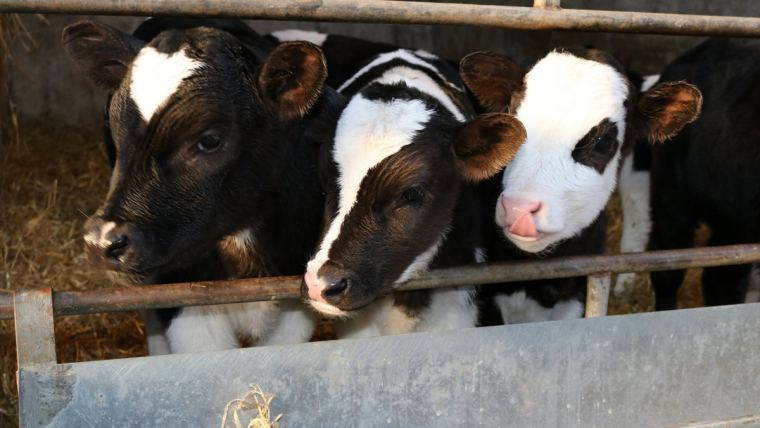Snowy stress: Ensure your calves stay warm and maintain growth in wintry weather

Storm Emma has hit Ireland and the United Kingdom with blizzard conditions overnight. Temperatures have plummeted, and snowmen are popping up around the countryside. No matter where in the world you might be having a snow day, looking after calves properly in a winter wonderland will ensure growth rates do not decline.
Remember: The heifer calf is the future of the dairy herd and will determine the potential future production of the herd, no matter what the weather! During this cold spell, calf management should be a priority on-farm.
The InTouch Calf Programme offers focuses on four key areas for healthy growth in cold weather, including:
- Colostrum
- Early nutrition and energy intake
- Environment
- Immunity
- Colostrum
We only have one opportunity to maximise the benefits a calf receives from colostrum. Colostrum is a nutrient-rich material containing immunoglobulins (antibodies) that are necessary for the newborn calf. A calf’s immune system is not fully functional until 1 to 2 months of age, so calves are dependent on the passive transfer of antibodies from the cow to protect them until this time.
The ability to absorb colostrum is at its highest in the first hour after birth and ceases at 24 hours. It is important, especially during cold weather, to bottle feed or stomach tube feed at least 3 litres of colostrum and give a second feeding eight hours later before transitioning to milk or calf milk replacer.
2. Early nutrition
Milk
In order to maintain growth and achieve a target of up to 0.6 kilograms of weight gain per day, aim to feed 15 percent of bodyweight (for a 40-kilogram calf, this equals 6 litres of milk per day). Calves require approximately 325 grams of milk solids for maintenance in thermoneutral temperatures. Calves weighing 40 kilograms on 4 litres of milk per day (which is 10 percent of their bodyweight) can achieve 200 grams of growth per day. However, calves weighing more than 40 kilograms will struggle to maintain weight on this amount. Milk replacer has lower fat and energy content, and a larger volume is therefore needed.
Calf milk replacer
When mixing milk powder, always remember that it takes 125 grams of powder to make up to 1 litre of milk replacer, not 125 grams of powder added to 1 litre of water. Milk replacer should be matched to growth targets.
In cold weather, milk solids should be increased 100 grams per day for every 10 degrees that the temperature drops below 20 degrees. Milk can be fed more frequently and at higher concentrations.
Calves require more milk for maintenance in cold weather. The thermoneutral zone for calves less than 3 weeks of age is 15 to 20 degrees Celsius. For calves that are older, the low critical temperature is 5 degrees Celsius. Every degree below 10 degrees Celsius requires 2 percent more energy in the newborn calf; a temperature of 0 degrees Celsius requires 20 percent more feed.
Fat content in calf milk replacer can be increased 2 to 3 percent in cold weather. Below freezing, daily energy requirements can increase by up to 30 percent. Draughts or wind chill can exacerbate this and will have the same effect as a drop in temperature.
Water
Ensure water troughs are not frozen. Water should always be freely available for calves in addition to the water that is consumed through liquid milk feeding.
- Environment
Environment is a crucial factor in cold weather. Rest and space are a priority for calves, as they spend 80 percent of their time lying down.
Housing
Ensure calves are comfortable in their environment, with plentiful dry bedding and shelter from draughts and breezes. Thermal calf jackets can be a very useful addition to keep calves warm and maintain body heat. If calves are huddling in corners of the pen, adjust shelter accordingly and use bales to create shelter corners in the pen if necessary. Pen or group changes should be kept to a minimum to reduce stress.
- Immunity
Adequate colostrum, as explained above, clean calving areas and a well-ventilated, hygienic calf shed environment will go far in preventing scours and respiratory diseases, along with using correct vaccinations.















